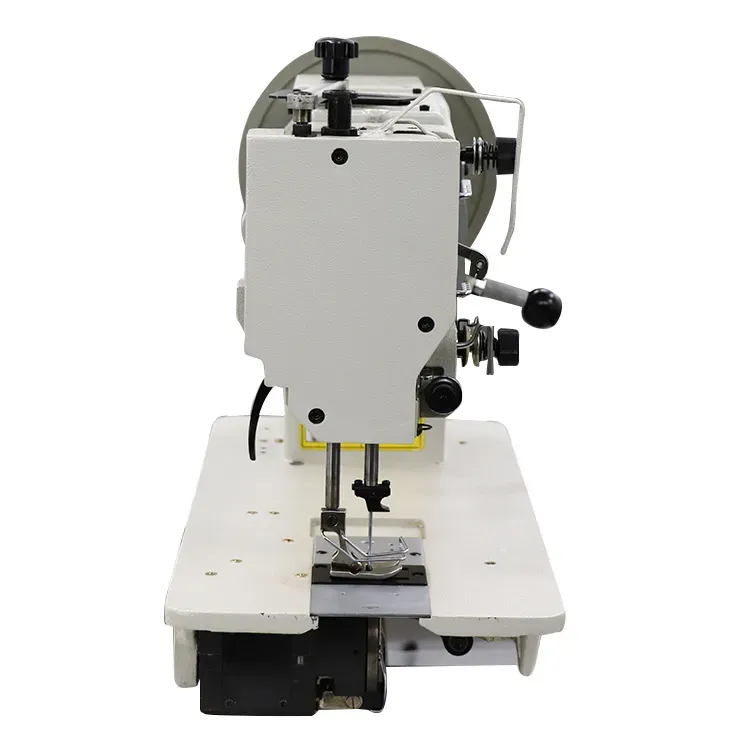overlock sewing machine industrial
The Importance of Industrial Overlock Sewing Machines in Modern Manufacturing
In the ever-evolving landscape of the textile and garment industry, efficiency and quality are paramount. One of the key players in achieving these goals is the industrial overlock sewing machine. Known for its ability to create durable seams while finishing edges, the overlock sewing machine has become an essential tool in garment factories and textile production environments worldwide.
What is an Overlock Sewing Machine?
An overlock sewing machine, often referred to as a serger, is designed to cleanly finish the edges of fabric, preventing fraying and unraveling. It uses multiple threads and specialized stitching techniques that allow it to sew and serge (finish the edges) in a single operation. This dual function significantly enhances productivity, making the overlock sewing machine a staple in industrial settings.
The Mechanism Behind Overlock Sewing Machines
Industrial overlock machines typically employ a combination of loopers and needles to create various stitch types, including 3-thread, 4-thread, and 5-thread options. The most common configurations include differential feed, which allows for better handling of various fabric types, ensuring that stretchy materials like knits do not ripple while being sewn.
The ability to adjust tension and stitch length enhances versatility, enabling operators to work with a wide range of materials from delicate lace to heavy denim. Additionally, many industrial overlock machines come equipped with features designed to streamline the sewing process, such as automatic threading systems, adjustable cutting widths, and built-in scrapping mechanisms.
The Role of Overlock Machines in Production Efficiency
In large-scale manufacturing, the speed at which garments are produced directly impacts profitability. Overlock machines play an integral role by reducing the time taken to create clean edges and durable seams. This efficiency not only speeds up production but also minimizes labor costs, allowing factories to operate smoothly at a high capacity.
By finishing edges with an overlock stitch, manufacturers can significantly reduce the need for additional processing, such as binding, thereby saving both time and materials
. This reduction in steps is particularly beneficial during high-volume production cycles, where the focus is on maintaining quality while meeting strict timelines.overlock sewing machine industrial

Quality Control and Consistency
Another critical aspect of using industrial overlock sewing machines is the consistent quality they provide. Automated features ensure that each seam is uniform, reducing the likelihood of human error which can occur in manual stitching processes. Consistent quality is crucial in the fashion industry, where brand reputation and customer satisfaction hinge on the perfection of the final product.
Moreover, overlock stitching creates a finished appearance that is aesthetically pleasing, which can enhance the overall value of garments. Customers are increasingly looking for products that not only fit well but also reflect quality craftsmanship, making the role of overlock machines even more vital in maintaining a competitive edge in the market.
Versatility Across Industries
While predominantly used in garment manufacturing, industrial overlock sewing machines find applications across various sectors, including home textiles, upholstery, and automotive industries. Their versatility extends beyond clothing to encompass items like curtains, tablecloths, and even soft furnishings, showcasing their functionality.
The adaptability of these machines means they can be tailored to meet specific production needs, often suited for both mass production and customized orders. This flexibility makes them an invaluable asset for businesses looking to expand their product offerings without compromising on quality or speed.
Future Trends in Overlock Technology
As technology continues to advance, the next generation of industrial overlock sewing machines is expected to incorporate more automated features and smart technology. Innovations in digital control systems, intuitive interfaces, and connectivity for remote monitoring could greatly enhance productivity and ease of use.
In conclusion, industrial overlock sewing machines have become indispensable in the textile manufacturing landscape, combining efficiency, quality, and versatility. They not only streamline production processes but also guarantee the level of craftsmanship that consumers demand. As the industry continues to evolve, so too will the capabilities of overlock sewing machines, ensuring that they remain a critical tool for manufacturers around the globe.
-
Boost Production Efficiency with a Pattern Sewing MachineNewsAug.29,2025
-
Industrial Excellence with the Best Heavy Duty Sewing MachineNewsAug.29,2025
-
Precision and Power with the Best Pattern Sewing MachineNewsAug.29,2025
-
Reliable Bulk Packaging Starts With the Right FIBC Sewing MachineNewsAug.29,2025
-
Advanced Packaging Solutions: Elevate Productivity with Jumbo Bag Sewing Machine and Industrial Stitching EquipmentNewsAug.29,2025
-
High-Performance Solutions for Bulk Packaging: FIBC Sewing Machine and MoreNewsAug.29,2025
-
Maximize Efficiency with an Industrial Cylinder Arm Sewing MachineNewsAug.28,2025


























